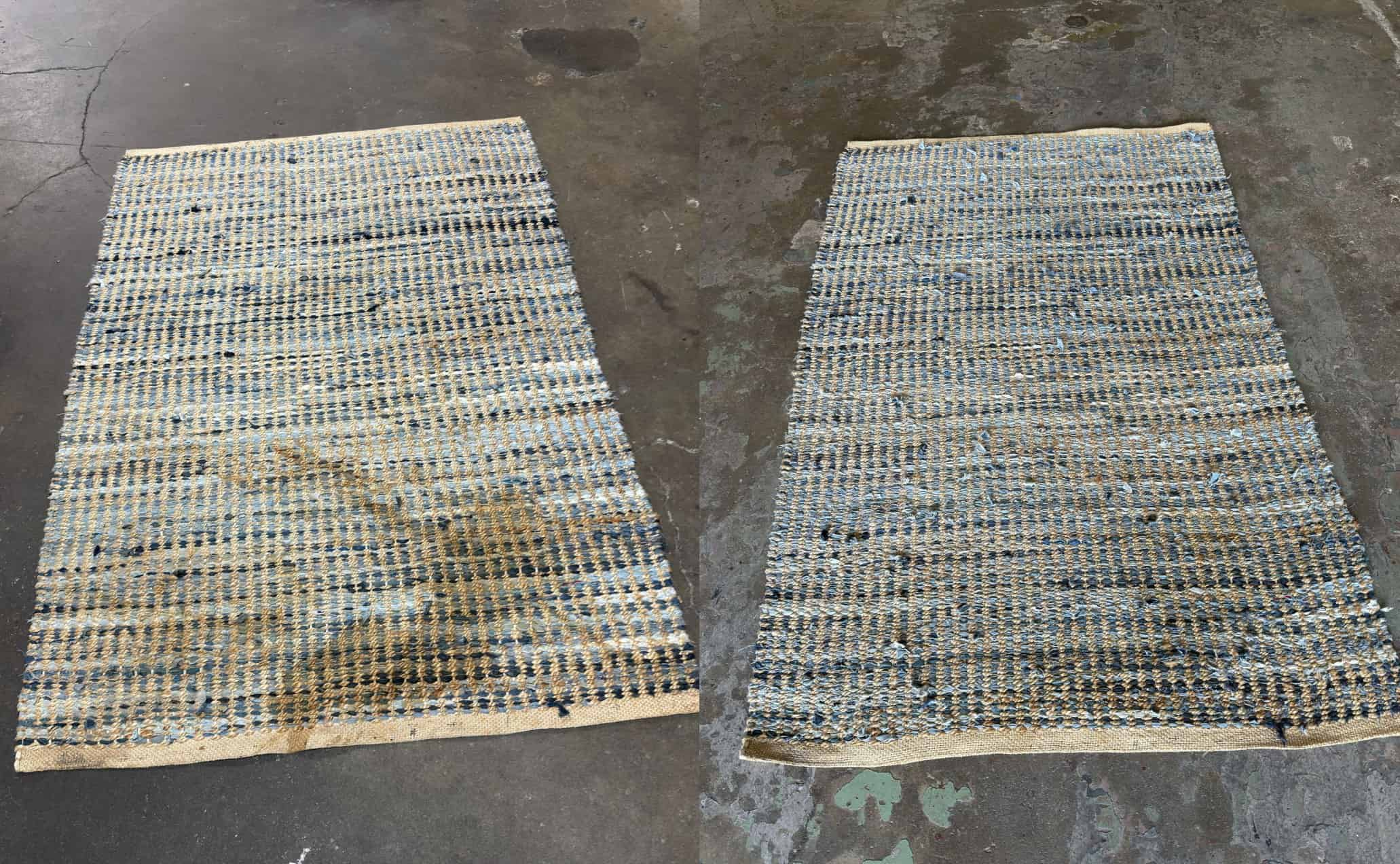This week we had a customer bring in an area rug that was a lower quality rug, and had a big stain in the middle of it. Her question to us was is it worth cleaning or should I just replace it? We get this question every week. The process to properly clean an area rug is very involved. It takes finesse using heavy equipment. The rugs are delicate, but the machinery that we used to clean them is pretty heavy duty!
To answer that question, we have to first look at the value of the rug, because the cost of cleaning rugs is very similar, regardless of what kind of rug. The exception of this is the rug that we can clean without risk in your home like the one pictured below. (link to blog post here)

Just so you understand the cost of cleaning a rug, I want to outline the process below. After that, we can then determine whether the value of the rug justifies the cleaning process.
There are three main steps needed in order to remove soil from a rug.
There are insoluble and soluble soils. Meaning dry soils and oily soils. In order to remove both types of soils (one that will dissolve in water and one that won’t) you need two steps!
1. Remove dry soil.
We do this by using a pretty robust machine that vibrates the soil out out of the deep deepest part of your rug.
2. Fully submerge the rug in water.
This takes a very large space and high volume pressure washer. Part of that second step is to add a cleanser that suspends the soil on a molecular level - and then agitate to suspend the dirt for rinsing (another robust machine!)
3. Removal of the water and expedious drying.
Because we need to remove a large volume of water (a typical 8 x 10 rug can hold up to 40 gallons of water - a wet wool rug can weigh up to 450 pounds!) we again need very heavy duty equipment. Step three involves squeegeeing the rug, and then putting it in a very large centrifuge to spin the water out of it (Imagine your clothing dryer but industrial size.) to remove about 80% of the water and then the rug gets hung (or lays flat) in a very large humidity and temperature controlled drying room to remove the remaining 10% of the water. A “dry“ rug will still have some natural moisture content.
Now I am simplifying our process and skipping over the steps of inspection, identifying the rug, , urine treatments, stain treatments, possible repairs, fringes, etc. - but now you understand what it takes to clean your rug. Now let’s look at whether it has value for you.
Rugs value can be measured with different reasons, sometimes it’s sentimental, sometimes it is an heirloom, sometimes it was just a very expensive rug, and sometimes it’s an antique. And sometimes it’s just a commodity rug with a short lifespan.
Can we improve on all of these rugs with a cleaning? Absolutely!
Can we make them look like new? Not Always.
Below is a list of things that we can’t really reverse:
- Mold
- Dry rot
- Severy color migration
- Very saturated urine on rug thas has latex decay or is made of a very low quality viscose
- A rug thas has been the victim of stains from dyes
Everything else we can definitely get a significant improvement on!
So now we need to take the value of your rug, the cost of the cleaning, the cost of replacing said rug, and the results we expect and then we can know if the rug is worth cleaning!!
Is it always worth finding out? Most definitely!!!
Happy Cleaning!



